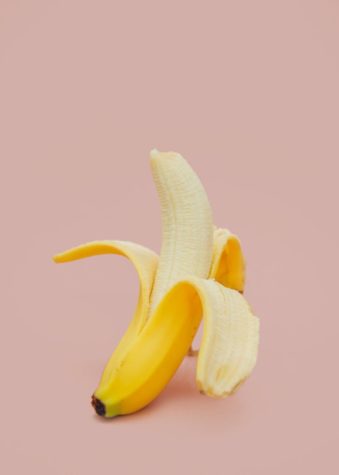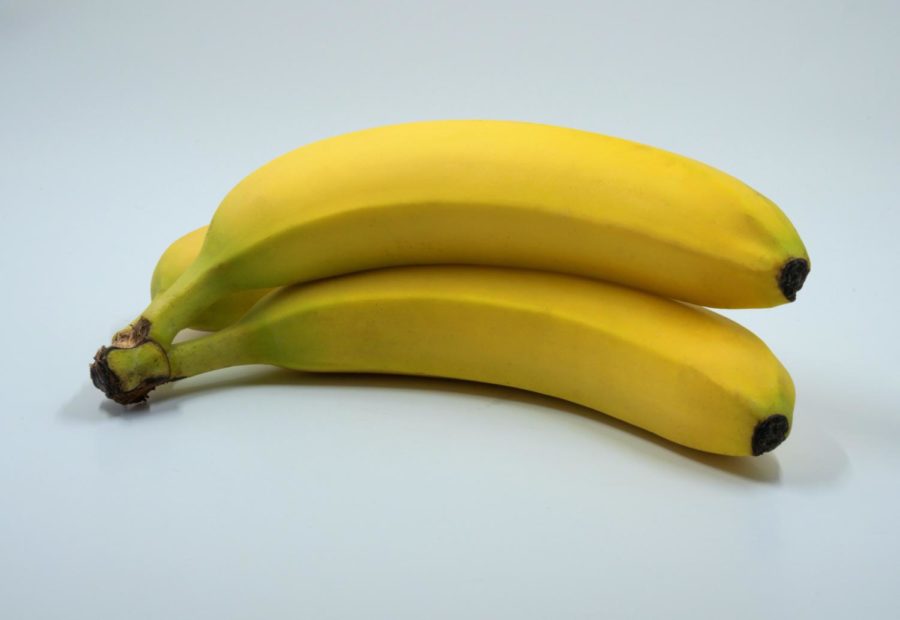The Surprisingly Complex History of the Banana
The Fall of the Gros Michel and the Rise of the Cavendish
When thinking of the word “banana,” most people will think of a bright yellow, sometimes green fruit with a smooth curved shape. This type of banana that many people tend to recall is from the Cavendish variety and it makes up 99% of all exported bananas.
As popular as it may be, the Cavendish is only one of over a thousand different varieties of bananas, but it wasn’t always the most commonly seen and exported banana variety. Up until the 1960s, most banana plantations grew a variety called the Gros Michel, also known as the Big Mike. It was a sweeter, richer version of the Cavendish. The Gros Michel was claimed to be so good that it was even called the king of bananas.
Unfortunately, the Gros Michel variety has become virtually extinct today. In the 1950s, a strain of the Panama disease called tropical race 1 struck the banana plantations. The Gros Michel was highly vulnerable to this disease and ultimately got wiped out. This disease caused many bananas to wilt, and because the fungi would stay in the soil, it prevented the future planting of new bananas.
Banana plantations back in the 1900s were primarily monoculture, implying that farmers would only grow one crop species at a time. When the Panama disease struck, farmers were left devastated and suffered heavy losses. The soil-hindering fungus was so widespread that farmers had to move fields every ten years. They took extreme measures to try to continue growing bananas such as completely abandoning fields with infected crops and flooding them.
Fortunately, an alternative banana variety called the Cavendish was found. The Cavendish is more disease resistant and has a better yield rate. Given this, it was no surprise that by the 1960s the banana industry had completely moved on from the Gros Michel to the Cavendish variety.
Today, the beloved Gros Michel variety can only be found in specialty markets and is grown on a small scale. The Gros Michel used to be a fruit exported all over the world and played a significant role in many countries’ economies. However, the effect of a single disease caused it to become almost entirely overtaken by the more disease-resistant Cavendish variety.
“It’s hard to try different varieties of bananas, since my local supermarket only sells the Cavendish variety. I would love to try the Gros Michel, but I don’t think I would go out of my way to a specialty market just to try it out,” said Sydney Lee ’23.
While we may no longer see a Gros Michel banana in the supermarket today, we can still experience how it tastes through modern chemistry. Scientists have discovered that a certain chemical called isoamyl acetate is responsible for the sweet taste of the Gros Michel. It is mainly used as an artificial flavoring for banana flavored products. This is why banana flavored products taste different from the bananas you may buy from the supermarket.
Perhaps one day the Cavendish will meet the same fate and only become available as an artificial flavoring like the Gros Michel. A mutation of the Panama disease called tropical race 4 is beginning to spread throughout Southeast Asia. In 2019, it was reported that a case of tropical race 4 was seen in Colombia, marking its first appearance in the Americas. Sadly the Cavendish bananas we eat today are susceptible to this variant. Like the Gros Michel, the Cavendish is on track to meet the same fate.
Scientists are working hard to create a banana variety more resistant to the Panama disease. In Australia, scientists have created a banana that was completely resistant to the Panama mutant tropical race 4 by inserting the gene of a wild banana into a Cavendish banana. Interestingly enough, by mixing the Cavendish and the Gros Michel, scientists have also created a tropical race 1 resistant hybrid.
“I wonder whether this new hybrid will taste more like the Cavendish or the Gros Michel,” said Gabriel Marinescu ’23.

This however is only a method to delay the inevitable and not solve the problem; The banana industry is highly unsustainable. Planters still grow in monocultures, giving these plantations a lack of genetic diversity. Since they can be easily wiped out with just one disease, planters spray them with heavy amounts of pesticides and fungicides. Their thick peel makes it harder for the pesticides to become effective, causing farmers to spray copious amounts of pesticide on these crops.
On top of their use of pesticides, not much has changed with the labor laws regarding how these bananas are harvested. Even now, the banana industry is still an enclave economy. This is where a foreign force extracts resources from another country in an export industry. In addition the banana industry still uses child labor. Children as young as eight are working in these banana plantations.
Education is expensive, and many families can’t afford to buy books and other school supplies. In an impoverished family, sending a child to work would help them get immediate financial support. School and education are investments many of these poor impoverished families cannot make.
These children are constantly climbing tall trees and working with sharp tools such as machetes all while being exposed to harsh chemicals such as toxic pesticides and fungicides. Given the fact that many of them were not given any proper protective gear, it is no surprise that negative health effects such as dizziness and nausea cause a number of health problems for these young workers.
“It’s sad that such young children are working in such conditions. When I was 8 years old, I was watching Chinese cartoon shows such as The Pleasant Goat and The Big Bad Wolf and not worrying about how to make a living for my family,” said Ellena Wang ’23.
Despite knowing all of this, banana plantation owners still choose to hire child workers as they are the cheapest source of labor. Children working in these plantations are paid well below minimum wage averaging roughly 60% of the minimum wage. This amounts to around $3.50 a day.
Even adult workers are treated poorly. Banana plantation workers are estimated to earn only 4-9% of the price of the bananas while retailers earn a whopping 40%. Employment in these farms can be very unstable, and many workers do not earn enough to cover the cost of living. These workers are given temporary contracts or are hired on a day-to-day basis.
Despite the issues within the banana community, it is undeniable that the banana is a widely known and highly popular fruit. “I like bananas in smoothies because their sweetness balances out more sour fruits,” said Katrina Tablang ’23.
Their versatility, sweetness, and nutritional value have helped them establish a strong foothold in the global market. Perhaps one day the Cavendish we eat today may end up like the Gros Michel and become virtually extinct. But for now, enjoy the bananas you might have taken for granted while you still can.
“It’s sad that such young children are working in such conditions. When I was 8 years old, I was watching Chinese cartoon shows such as The Pleasant Goat and The Big Bad Wolf and not worrying about how to make a living for my family,” said Ellena Wang ’23.
Khado Tsephel is a Copy Chief for ‘The Science Survey.' In her free time, she enjoys reading and listening to music. In college, Khado wants to pursue...

